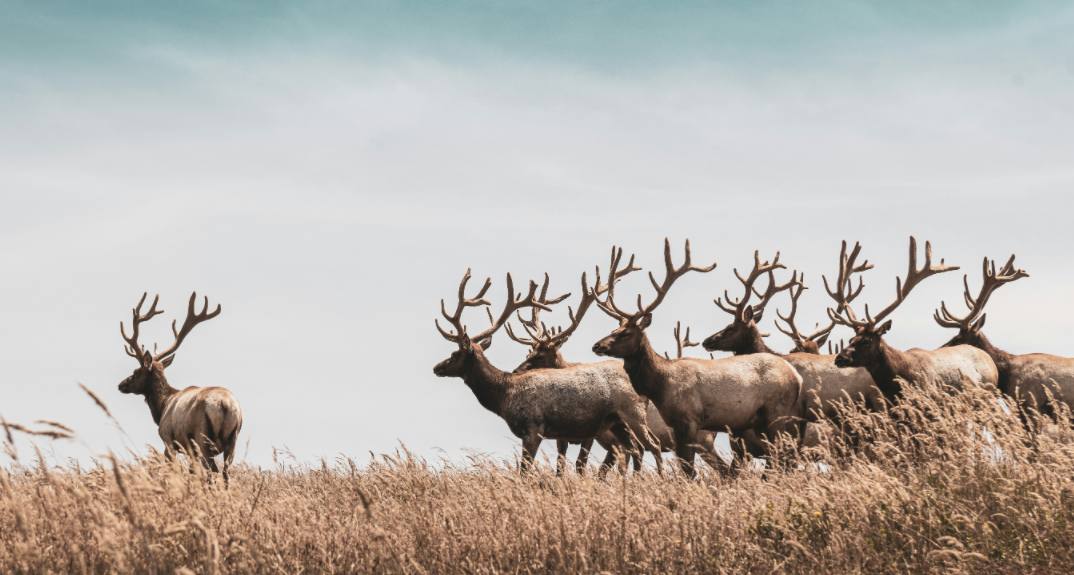Roosevelt Elk vs. Rocky Mountain Elk: A Hunter’s Guide
Elk hunting is one of the most exhilarating experiences in North America, but not all elk are the same. Two of the most sought-after subspecies are the Roosevelt elk (Cervus canadensis roosevelti) and the Rocky Mountain elk (Cervus canadensis nelsoni). While they share many similarities, their size, habitat, behavior, and hunting tactics can vary significantly.
For hunters looking to target one of these majestic animals, understanding their differences and unique challenges is essential. This guide breaks down everything you need to know about Roosevelt elk vs. Rocky Mountain elk, helping you choose the right hunt and prepare for success in the field.
Physical Differences: Size & Build
Both Roosevelt and Rocky Mountain elk are impressive in stature, but Roosevelt elk hold the title for the largest-bodied elk in North America.
Roosevelt Elk:
✔ Weight: Bulls can weigh 700–1,200 lbs, while cows range from 575–625 lbs.
✔ Height: Around 5 feet at the shoulder, with a more compact, muscular build.
✔ Antlers: Heavy, thick, and more palmated due to the dense coastal environment where they grow. Roosevelt bulls tend to have shorter tines compared to their Rocky Mountain cousins.
✔ Coat: Dark brown, often appearing darker than Rocky Mountain elk, with a thicker mane around the neck.
Rocky Mountain Elk:
✔ Weight: Bulls typically weigh 600–900 lbs, with cows around 450–600 lbs.
✔ Height: Can stand slightly taller, with a more streamlined build for high-altitude movement.
✔ Antlers: Long, symmetrical, and more spread out, often reaching lengths over 50 inches.
✔ Coat: Lighter brown with a more distinct tan or golden rump.
Key Takeaway: If you’re after a massive-bodied elk, Roosevelt bulls are your target. However, if trophy antlers are your priority, Rocky Mountain elk tend to grow taller and wider racks due to better forage conditions.
Habitat & Hunting Challenges
Roosevelt Elk Habitat:
✔ Found in the Pacific Northwest, primarily in Western Oregon, Washington, and Northern California, as well as coastal British Columbia.
✔ Thrive in dense temperate rainforests, with thick underbrush, ferns, and towering evergreens.
✔ Roosevelt elk rarely migrate long distances; they tend to stay within low-elevation forests year-round.
✔ Due to thick cover and difficult terrain, spot-and-stalk hunting is extremely challenging.
Rocky Mountain Elk Habitat:
✔ Found in the Rocky Mountain region, including Colorado, Montana, Wyoming, Idaho, and Utah, as well as portions of Canada and Arizona.
✔ Prefer open mountain meadows, grassy valleys, and high-elevation forests.
✔ Migrate seasonally—moving higher into the mountains in summer and dropping into lower valleys in winter.
✔ The more open terrain makes spot-and-stalk hunting a viable strategy.
Key Takeaway: Roosevelt elk require close-range, aggressive hunting tactics in thick cover, while Rocky Mountain elk offer better glassing and long-range shot opportunities.
Hunting Strategies for Each Elk Species
Hunting Roosevelt Elk
✔ Calling is key: Roosevelt bulls are highly vocal, and aggressive bugling can bring them in close.
✔ Move slowly & stay patient: Thick forests require stalking through dense brush while remaining undetected.
✔ Shot distances: Due to the thick cover, most shots will be within 50–150 yards.
✔ Wind & scent control: Coastal regions mean shifting wind patterns—using thermals to your advantage is crucial.
✔ Rainy conditions: Expect wet and muddy terrain—waterproof gear and silent movement are essential.
Hunting Rocky Mountain Elk
✔ Glassing & spot-and-stalk: Take advantage of open meadows and ridges to locate bulls at long distances.
✔ Long-range shooting: Shots can range from 200 to 500 yards, so practicing with your rifle at extended distances is crucial.
✔ Utilize migration routes: Elk migrate with the seasons, so understanding when and where they move increases your odds.
✔ Bugling & cow calling: During the rut, aggressive calling can bring in bulls, but post-rut, cow calls may be more effective.
✔ Steep terrain: Be ready for high-altitude hiking, and consider hunting on horseback or using pack animals for retrieval.
Key Takeaway: If you enjoy close encounters and thick cover, Roosevelt elk will challenge your stealth and calling skills. If you prefer long-range glassing and mountain terrain, Rocky Mountain elk are the better fit.
Hunting Seasons & Regulations
Roosevelt Elk Seasons:
✔ Typically start in late August (archery) and run through December (rifle & muzzleloader), depending on the state.
✔ Some areas have limited draw tags, while others offer over-the-counter (OTC) tags.
✔ Oregon and Washington are prime Roosevelt elk hunting states with solid public land opportunities.
Rocky Mountain Elk Seasons:
✔ Archery: Late August – September (during peak rut).
✔ Rifle: October – November.
✔ Muzzleloader: Varies by state but usually falls between archery and rifle seasons.
✔ States like Colorado offer OTC rifle tags, making it one of the most accessible places for non-resident elk hunters.
Key Takeaway: If you’re looking for better public land access, Rocky Mountain elk offer more OTC opportunities, while Roosevelt elk hunts often require special draw permits or private land access.
Meat Quality: Which Elk Tastes Better?
✔ Roosevelt elk tend to have a stronger, richer flavor due to their diet of coastal vegetation. The meat is lean but can be slightly tougher due to their stocky build.
✔ Rocky Mountain elk often have a milder, more tender taste, as they consume more grasses and grains.
If you’re after leaner, richer meat, go for Roosevelt elk. If you prefer mild, tender venison, Rocky Mountain elk might be the better choice.
Which Elk Hunt is Right for You?
🔹 Choose Roosevelt Elk if:
✔ You prefer thick rainforest terrain and stealthy, close-range hunts.
✔ You enjoy calling bulls aggressively in dense cover.
✔ You’re prepared for wet, challenging conditions with limited visibility.
🔹 Choose Rocky Mountain Elk if:
✔ You like open-country hunting with long-range shooting.
✔ You want to glass for bulls from ridges and spot-and-stalk.
✔ You’re comfortable with high-altitude hiking and backcountry conditions.
Both species provide an incredible hunting experience, but your choice depends on the terrain, challenge level, and style of hunting you prefer.
Final Thoughts
Whether you choose to pursue the mighty Roosevelt elk of the Pacific Northwest or the high-altitude Rocky Mountain elk, both offer an unforgettable hunting adventure. Each subspecies presents unique challenges, but with the right preparation, scouting, and strategy, success is within reach.
So grab your gear, study your target species, and prepare for one of the most thrilling hunts in North America! 🏹🏔️


